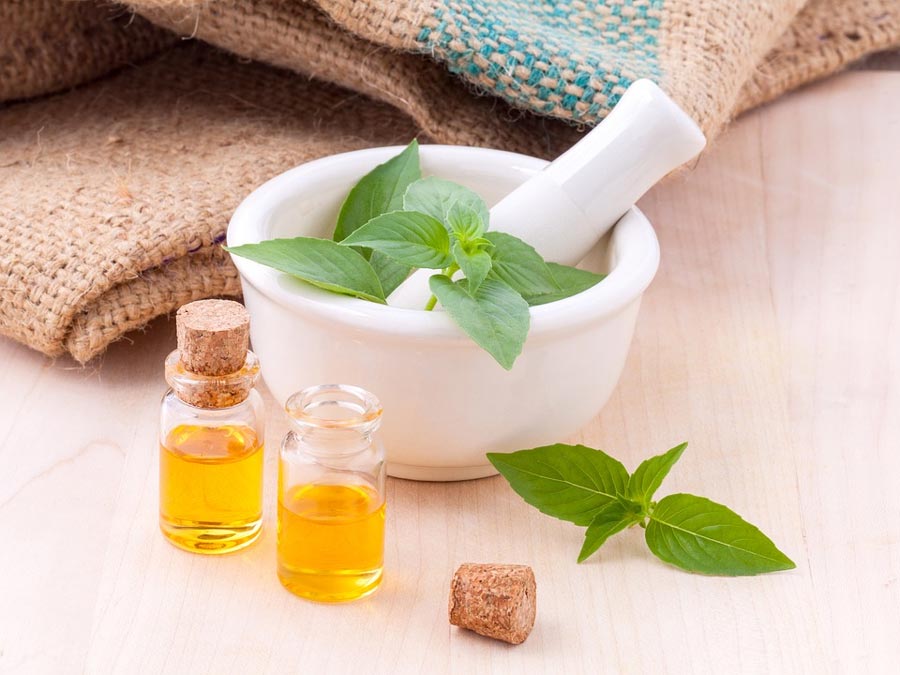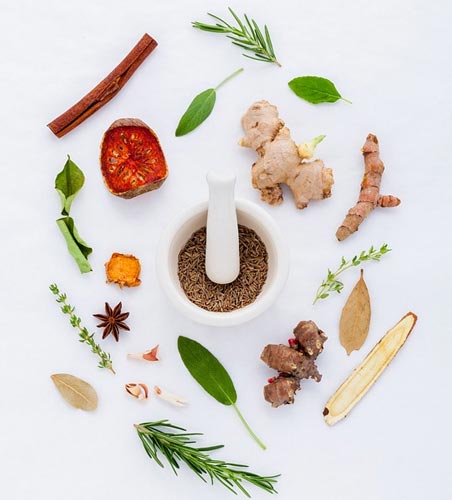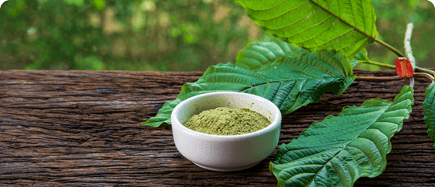Kratom use often comes about as part of an interest in natural health solutions and natural medicine. People suffering from day-to-day discomfort or lack of energy turn to kratom for a herbal way to feel better.
For our readers who are interested in alternative methods, we thought we’d write a blog about a system of natural medicine called homeopathy. In this blog, we’ll cover the basics of “what is homeopathy?” We’ll also describe some of the details of how homeopathic solutions are prepared.
Homeopathy: The Dawn of a New Era in Natural Medicine
What is homeopathy? In the late 1700s, Samuel Hahnemann, a German physician, happened to be translating William Cullen’s Lectures on the Materia Medica into German and noticed something intriguing. The symptoms that the substance quinine produced in healthy people were the same symptoms that quinine was supposed to resolve in a sick person. This observation led him to create a theory that “like cures like,” which in 1796 led to the invention of a new system of therapeutic medicine called “homeopathy” (from Greek “like” + “suffering” or “feeling”).
Homeopathy versus Conventional Medicine
Scientific medicine at the time involved practices that Hahnemann did not support, such as bloodletting. He also noticed that other conventional approaches in medicine sometimes did the patient more harm than good. Determined to create an alternative, Hahnemann went about testing his theory of homeopathic solutions by “proving” different substances on healthy people and recording the resulting symptoms.
The idea was that this information would tell him the symptoms and illnesses that the tested substances might be able to help with. Taking his theories and trials, he wrote a book in 1810 called Organon der rationellen (Organon of Rational Medicine) which explains what homeopathy is, as well as his system of homeopathic solutions.
Dilution and Potentization
After developing his theories about what homeopathy is, the next step was to turn these substances into remedies. In order to make his remedies safe as well as effective, Hahnemann developed a process called “potentization.”
Hahnemann would start with a certain amount of the active substance he was testing diluted in alcohol or distilled water and strike this mixture against an elastic material (such as a leather-bound book). This striking action was referred to as “succussion” and was meant to imprint the substance on the water molecules in the vessel.
After striking the vessel against the book, he would then dilute the mixture again and succuss the solution each time to the point that it was so diluted that not one molecule of the original substance remained. The idea was that each dilution and succussion would actually make the homeopathic remedy more potent. Hence, the process is also referred to as “potentization.”
The Ingredients Used in Homeopathic Remedies
So, what are the substances used to create homeopathic remedies? There are three main types of active ingredients used to create the remedies: nosodes, sarcodes, and plant extracts.
Nosodes
What is a homeopathy nosode? “Nosode” comes from the Greek word for “disease” and in homeopathic solutions, refers to a preparation of a diseased substance that is then used in management of that disease. Similar to the theory behind vaccination, nosodes take secretions or excretions from sick people or organisms (microbe cultures, fungi, animals) and transform them into a safer substance to be taken to reduce instances of that disease in the patient.
Sarcodes
Almost the opposite of nosodes, sarcodes are medicines prepared with healthy animal tissues and secretions. The idea is that these healthy substances will provide a “blueprint” for health that will then educate the patient’s body to produce this same healthy organ tissue instead of diseased tissue.
Plant extracts
Plant and herb extracts have long been a part of several approaches to wellness, but what is a homeopathy plant extract? Instead of using herbs to block symptoms, homeopathic solutions use them to unblock the symptom. For example, eating a chili pepper will tend to make a healthy person’s eyes water and nose run. Therefore, homeopathy would use a chili pepper extract as a remedy for a runny nose. The plants used in homeopathic remedies can include herbs, fruits, vegetables, flowers, seeds, nuts, and sea life.
Homeopathy in Society
It’s all very well to have a theory and create some remedies based on that theory, but what is the popularity of homeopathy with patients?
In 1821, Hahnemann was forced to leave his home in Leipzig due to the hostility of apothecaries and went to live in Köthen at the invitation of the grand duke of Anhalt-Köthen. Fourteen years later, he moved to Paris where his system of medicine became wildly popular.
Over the next century, homeopathy became so mainstream that people could go to homeopathic practitioners instead of general practitioners (GPs) if they wished. The choice of homeopathic solutions for everyday ailments was common and easy to access by the beginning of the 1900s.
New Developments
Over time, the work of Hahnemann about what homeopathy is helpful for has inspired other doctors and researchers to make new additions to homeopathic practice. Some of the most notable additions include homeoprophylaxis and bioenergetic instruments.
Homeoprophylaxis
Homeoprophylaxis takes the theory of homeopathic solutions and uses it to prepare an alternative to commercial vaccines that aims to be safer and more gentle. What is homeopathy prophylaxis? Rather than injecting the diseased animal matter directly into the body (or spraying or giving oral drops of this matter), homeoprophylactic preparations take the diseased secretions and dilute them in alcohol and/or distilled water with succussion techniques until not one molecule of the original substance remains. This preparation is then administered with almost tasteless, oral drops to educate the body about responding to the symptoms of that disease and similar diseases.
It is generally agreed that these preparations are safe. However, what is the effectiveness of homeopathy for warding off disease? So far, their effectiveness in reducing instances of life-threatening diseases can be difficult to measure and is still under debate.
EAV/EDS Instruments
Developments in the field of bioenergetic medicine and homeopathic solutions have come together with a growing interest in ElectroDermal Screening (EDS). The alternative name for this approach (EAV) is short for “Electro-Acupuncture according to Voll.” Both names refer to a system in which a practitioner determines a patient’s concerns based on responses that are accessed through the electrical pathways or “meridian lines” in their body.
In a screening session, the practitioner uses two small metal rods connected to the EDS/EAV machine to touch a point near the patient’s fingernails and/or toenails where the pathways known as “meridians” start and finish. The diagnostic machine then provides information about the systems in the patient’s body that are “out of balance.”
The screening machine works systematically through all of the bodily systems, including the lymphatic, circulatory, hormonal, liver/gallbladder, small and large intestines, nervous system, and so on. This machine can then be used to “imprint” the exact homeopathic solutions that the patient appears to need into the molecules of a water/alcohol solution with the aim of leveling these imbalances.
The Future of Homeopathy
While the basic theories behind homeopathy are still being contested, it continues to be the second-largest medical system in the world and has a lot of anecdotal evidence indicating its effectiveness. With more research and development, homeopathy has the potential to be further refined and become a powerful complement alongside modern medicine.
What is the future of homeopathy? As stated in a paper from the Canadian Medical Association Journal, “It does work and it does have a future. The future depends on the integrity of the few remaining prescribers.”
Homeopathy and Kratom
Do any homeopathic solutions contain kratom extracts? While this is a question we cannot answer, what we do know is that kratom has been used in natural medicine across Southeast Asia for at least the past few hundred years.
So then, what is the relevance of homeopathy in relation to kratom? As with homeopathy, kratom is under-researched in modern, clinical trials and is supported mainly by anecdotal evidence. Groups like the American Kratom Association and the Kratom Trade Association are lobbying for more research into the safe and effective medical usage of kratom. By supporting their efforts, you can get involved in making this herb safe and available for everyone!
If you’d like to try kratom yourself, we can recommend our top-quality kratom powder and kratom alternatives as some of the purest products on the market. Please contact us with any questions relating to your order. Shop now!
Please note that the US FDA has not approved kratom to be sold for human consumption, sold for external use only. The statements in this article have not been evaluated by the FDA. None of the products sold on our website are intended to diagnose, treat, cure, or prevent any disease or medical condition.
Want to learn more about kratom quality and value? Start here:
Why Buying Cheap Kratom Can Be Dangerous



